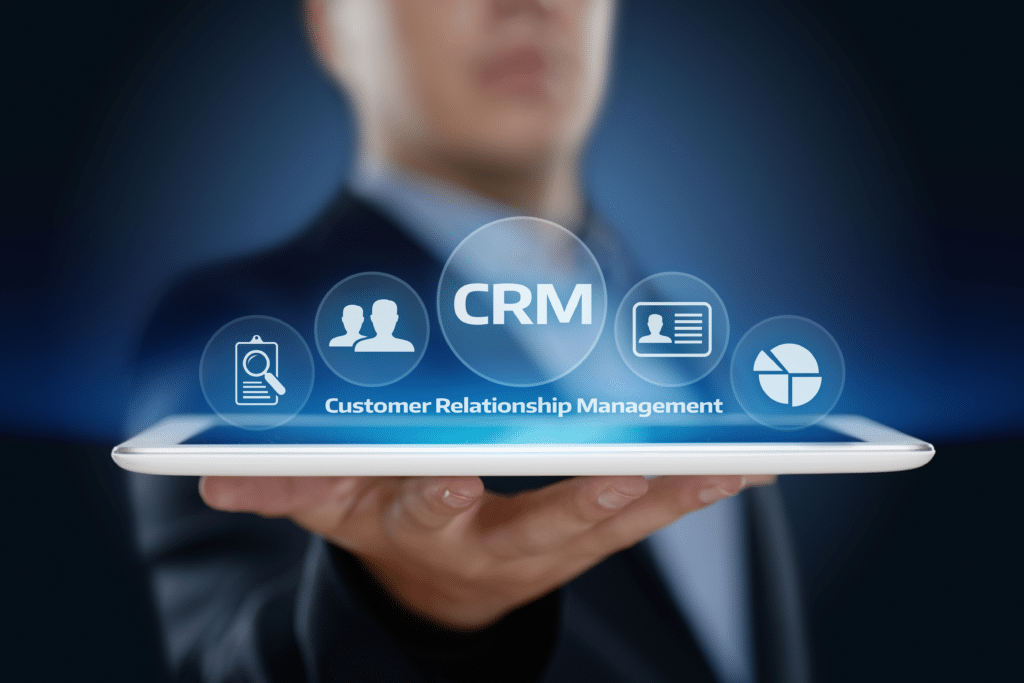The recent Unicorn success of Balto.ai is drawing attention to a new category in Sales Enablement Tools –Sales Relevance – which has far greater benefits for sellers than any other Sales Tool. Let’s review the current Sales Enablement Categories and the benefits they offer so we can see how important this new category is going to be.
CRM – CRM was created when it became practical to give sales reps access to computer databases to log the information from their sales calls instead of in their “3 ring binder”. The focus of CRM quickly morphed into a forecast tool that the CEO would use to confidently provide the basis of quarterly and annual forecasts to his Board of Directors. Most Boards, especially those of a public company, place an enormous amount of emphasis on “meeting the forecast”.
In fairness, the Board is guiding budget and hiring decisions based upon the forecast – and public company investors place the highest premium on the dependability of meeting projected earnings. In the Salesforce movie “The History of Sales”, highly respected Sales Consultant, Neil Rackham, said that CRM was a job insurance policy for the CEO . . .he said that “CRM was done to reps, not for reps”.
When CRM systems first became available, sellers were still “the brokers of information” – prospects had to go through them and give accurate contact info to get information on the company and its products. Now, prospects get all the product info (on both you and your competitors) on the internet. In fact, many prospects prefer to never talk to a sales rep.
So, the role of CRM has evolved into “Recording What Happened” instead of “Making Things Happen” (as the next Sales Enablement tools do for us). The leading Sales Relevance systems automatically update the CRM, and the Best Sales Relevance systems create a totally accurate “Story-So-Far” of everything that has been sent to, read by, said to, or said by the prospect.
The Story-So-Far, which can now be linked right into the prospect record in the CRM, can even show the actual duration of every discussion point that was relevant to the prospect. This capability is critical, because the actual time a point is discussed is usually the best indicator of what is most Relevant to the prospect.
Call Recording – gives Sales Leaders an opportunity to hear conversations the sellers are having so they can coach them effectively . . . and know what is happening in the territory. While Call Recording has an important role to play, it is now generally recognized that it takes too much time to select and then listen to the calls that might matter. Even the CEO of a leading Call Recording application admonished his customers that they should spend more time listening to calls for the application to be effective. Call Recording is like a gym membership – simply joining a gym does not get you in shape, and few are willing to put in the time using Call Recording to get the perceived benefits.
There is one thing you can’t get without listening to recorded calls: voice intonation. However, how many calls per seller per week does a Sales Leader need to listen to coach his reps on the proper intonation?
Another often sited benefit of listening to recorded calls is to measure the percentage of time the rep is speaking versus the prospect. Does the seller “show up and throw up”, or do they engage the prospect by asking questions that will lead the prospect to “discover for themselves” that they need your product?
We link into our Sales Relevance system transcribed calls that clearly show who is talking the most. The transcription product we integrate with is especially valuable when are transcribing Zoom or recorded video calls. (and aren’t most sales calls now Zoom Calls?) The sellers get three different sensory stimulations: listening to the words being said, watching the cursor move through the transcribed words as they listen to the voice recording, and looking at the prospect’s face for their reaction as key points are discussed.
The “SECRET SAUCE” TO MAKING CALL RECORDING INVALUABLE, is to direct the Sales Leader to ONLY THE KEY MINUTES FROM ALL THE RECORDED HOURS THAT WARRANT THEIR TIME. If the Sales Relevance system tracks the duration of each discussion point, then it can create a “Call Map” of all the recorded calls so that the Sales Leader can simply drag their cursor to the important discussions in the recorded calls that are linked in the comprehensive Story-So-Far.
More importantly, Sales Relevance system can create lists of the calls that warrant the manager’s attention. For example, calls where: the deal is forecasted to close this month… for over $YYY…and the purchase is budgeted. WOULDN’T THE SALES MANAGER WANT TO LISTEN TO THE DISCUSSION OF THE DECISION CRITERIA IN THESE SELECTED CALLS?
The Call Whisper feature was introduced with the promise that it would allow the sales managers to give guidance during the call, i.e. when the timely guidance could help close sales. But Whisper is too disruptive, so it has few users. Modern Sales Relevance systems allow the manager to just click a button to send suggestions via SMS or Chat to their reps during the calls if they are monitoring the calls – an effective way of Coaching4UÔ.
Sales Cadence – creates a discipline for the often-undisciplined Business Development Reps. Cadence is critical to maximizing the sales opportunities from your marketing dollars – multimode touches (calls, emails, text messages sent regularly so your company is in front of the prospect) creates a persistence which will get the appointment, but not close the sale.
The adoption of Sales Cadence systems has been phenomenal over the last several years. The market leaders in this category are true Software as a Service (SaaS) “Unicorns”. And you see that the market leaders are rapidly becoming the CRM for their customers. However, Sales Cadence systems are primarily “Sales Efficiency” systems – and while critical to leverage your revenues from your leads – they can be made dramatically more valuable when they are leveraged by integrating with a Sales Relevance system – a Sales Effectiveness system that makes sure every interaction is an “Interaction That Matters”.
Sales Relevance – the goal of Sales Relevance solutions (like Balto.ai and SalesRelevance.com) is to make the sales reps more effective on every call – being effective closes business!
Successful Sales Relevance Applications:
- Must be a seamless plugin to your current Sales Technology stack.
- Must go beyond AI voice recognition to know what to say . . . and when to say it.
- Allow the rep to simply click on the subject to get an accurate record of what is being discussed.
Speech recognition does not always give the Relevant answer. How many ways are there to say “Budget” and not relate to the “budget to buy my product”? For example: “Work From Home (WFH) has really benefitted my personal budget – by the auto gas savings”, “My $12 lunch budget is no longer needed because I just eat the leftovers from dinner”, “I save on my laundry budget because no one can tell if my shirt is pressed on a Zoom call”, etc.
By clicking the subject being discussed, the system tracks the actual time subjects are being discussed. This helps in training, but more importantly, it allows the AI to select the next best thing to say based upon what is unambiguously Relevant to the prospect.
Sales Relevance systems with AI allow you to “Pick Up Where You Left Off” on the next call by using AI to generate an opening statement that reflects everything in the Story-So-Far or your “augmented” prospect lead records.
We augment our prospect information with ZoomInfo data. This allows us to always be 100% relevant in our customer calls. We not only use this information to initially establish Relevancy, but this prospect specific data – when combined with the evolving Story-So-Far -drives the AI engine as it rebuilds our Talk Tracks during the calls to maintain our Relevancy to the prospect during the call.


